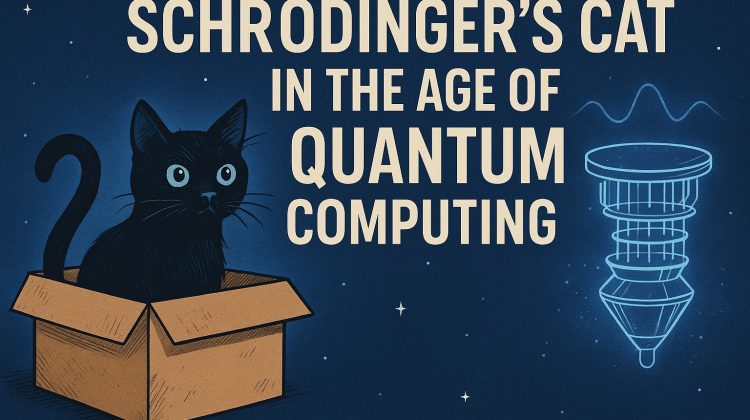
When Erwin Schrödinger dreamed up his famous “cat in a box” thought experiment in 1935, it was meant to expose the absurdity of quantum mechanics when applied to everyday objects. A cat that’s both alive and dead until observed? That’s not just unsettling — it’s pure theoretical mischief.
Fast forward nearly a century, and that once-theoretical paradox now perfectly explains the strange reality of quantum computing — a technology poised to reshape everything from encryption to AI. The cat has officially clawed its way out of the box… and into your tech stack.
A Quick Refresher: What Schrödinger’s Cat Actually Means
At the heart of the cat’s paradox is superposition — the idea that a quantum system can exist in multiple states at once until it’s measured.
In Schrödinger’s setup:
- A radioactive atom has a 50% chance of decaying within an hour.
- If it decays, it triggers a mechanism that releases poison, killing the cat.
- If it doesn’t decay, the cat lives.
- Until the box is opened, the cat is both alive and dead — because the quantum state of the atom is unresolved.
In 1935, this was science philosophy. In 2025, it’s basically a qubit in a hoodie.
From Cats to Qubits: Why This Matters in Quantum Computing
Classical computers deal in bits — zeroes and ones. Quantum computers use qubits, which can be both zero and one at the same time thanks to superposition.
This means:
- A classical computer tries solutions one after the other.
- A quantum computer can, in a sense, try multiple solutions at once.
The result? Problems that would take classical supercomputers millennia to solve could potentially be cracked in hours or even minutes. The paradox that was once a jab at quantum theory is now its best elevator pitch.
Alive, Dead… and Encrypted? Quantum Superposition in Cybersecurity
One of the first battlegrounds for practical quantum application is encryption. Today’s online security depends on math problems that are hard for classical computers to solve — think RSA keys that would take thousands of years to brute-force.
A sufficiently advanced quantum computer could blow those open like a soda can, thanks to algorithms like Shor’s algorithm. This is where quantum-safe or post-quantum cryptography comes in — security methods designed to survive a qubit onslaught.
And here’s the Schrödinger connection: until you “open the box” by measuring a quantum key, it’s in a state that’s both secure and insecure, unreadable to eavesdroppers. This property could create unbreakable, real-time encryption.
(More on this in our deep dive: “Alive, Dead… and Encrypted? How Schrödinger’s Cat Explains Quantum-Safe Security”)
The AI Angle: From Paradox to Progress
Quantum computing’s power to process multiple possibilities at once is a natural match for artificial intelligence. Imagine training a model where each weight, bias, or node could be explored in countless variations simultaneously — all without collapsing the state until the “best” configuration emerges.
Schrödinger’s cat analogy works beautifully here: AI systems could “consider” a vast number of solutions before you ever peek inside the box to pick the one that’s alive (metaphorically, anyway).
This isn’t sci-fi — it’s already the subject of research into quantum machine learning (QML). The hope is to dramatically reduce training times for massive models while unlocking problem-solving strategies classical AI could never reach.
(If you’re curious, check out “From Paradox to Progress: How Schrödinger’s Cat Drives Quantum AI Research”)
Why the Cat Still Purrs in 2025
It’s tempting to think of Schrödinger’s cat as a quirky relic of pre-computer science philosophy. But it’s more relevant now than ever:
- It’s the perfect teaching tool for understanding superposition.
- It’s a relatable way to explain why quantum computing is fundamentally different.
- It’s a bridge between philosophy, science, and modern tech applications.
In the 1930s, it was a thought experiment mocking the strangeness of quantum physics. In the 2020s, it’s a blueprint for some of the most powerful — and potentially disruptive — technologies humanity has ever attempted to build.
The Box Is Open — Now What?
We’ve “opened the box” on quantum computing, and the cat isn’t just alive — it’s building your encryption keys, training your AI, and quietly rewriting the rules of computation.
The real question now isn’t whether Schrödinger’s cat is alive or dead. It’s whether we’re ready for a world where quantum principles leave the lab, hit the mainstream, and reshape the very definition of what’s possible.
Leave a Reply